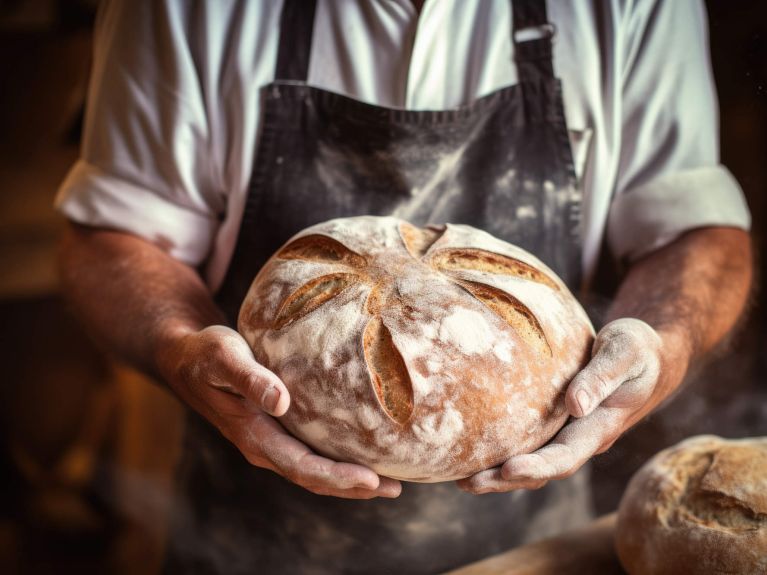German bread - world famous and diverse
There are more than 3,000 different types of bread in Germany. Learn some fascinating facts and figures about German bread culture.

German bread is known and loved all over the world; it is above all the variety of bread types that makes it unique. In 2014, the German Commission for UNESCO inscribed German bread culture into the nationwide inventory of intangible cultural heritage in Germany. Learn five fascinating and curious facts about German bread and the craftsmanship of bakers.
More than 3,000 different types of bread in Germany
Hardly any other country boasts so many different varieties. The Central Association of the German Bakery Trade estimates that there are 3,200 different types. It is the classics that are most popular, however: Toasting bread, breads made from a mixture of wheat and rye flours, breads with grains and seeds, and wholegrain breads.
56 kilograms of bread per household per year
The Germans love to eat bread - be it for breakfast or a classic “Abendbrot” (literally “evening bread”) supper. According to the Central Association of the German Bakery Trade, each household consumes on average around 56 kilograms of bread and bakery products per year.
Nearly 10,000 master bakeries in Germany
At the end of 2022, Germany was home to around 9,600 masterbakeries with around 35,000 shops. A bakery in the Bavarian town of Kemnath is thought to be the oldest in Germany - it has been in existence for 450 years.

Bread sommeliers – experts in bread
Sommeliers are normally wine experts. But there are also certified bread sommeliers who know “everything about bread”. One of the first and best-known bread sommeliers is Axel Schmitt from Lower Franconia. He undertook a project to study how the acidity of sourdough changes when exposed to music played at full volume. The organisers of the famous open-air heavy metal music festival in Wacken named him the “Wacken Baker”.

What pumpernickel has to do with Napoleon
Pumpernickel, a black bread from the Westphalia region, is one of the oldest varieties of bread. It is unclear where the name comes from. According to one of the most popular legends, the name is associated with Napoleon Bonaparte. “Bon pour Nickel” is apparently how his soldiers described the bread, meaning good for Napoleon’s horse Nickel. Though this myth has been debunked, pumpernickel remains one of Germany’s best-known breads.

